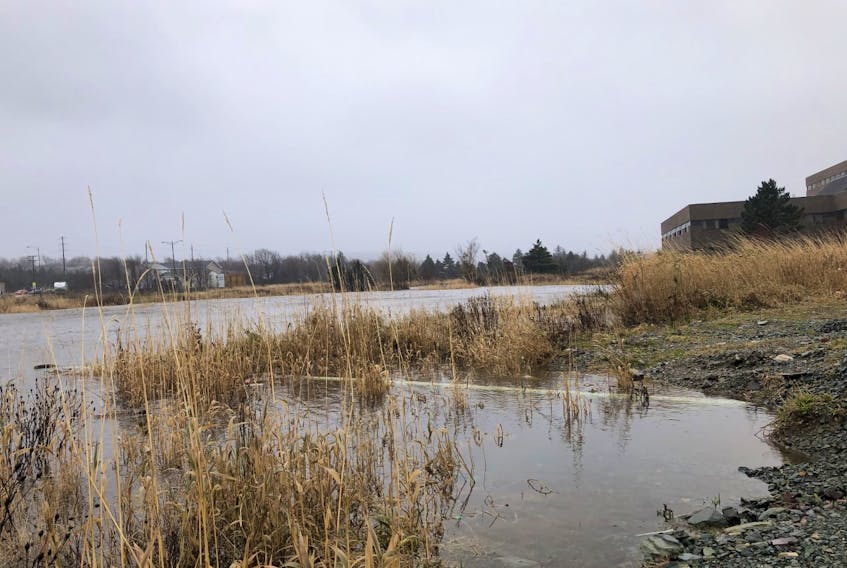Friday morning was the sort of day Eastern Health has been dreading for years.
Since 2017, the health authority has been worried that increasing water levels on Leary’s Brook would reach the point that a pond across from the hospital would overflow its banks and flow into the hospital’s underground electrical vaults. (Well, they’ve probably been worried about it for longer, but 2017 was when they started doing something.)
Thursday brought 75 millimetres of rain, and by Friday, it was 89.2 mm, with more rain on the way. Leary’s Brook was closing in on reaching the bottom of the Clinch Crescent bridge, the bottleneck at the bottom of the pond.

The brook was flowing at the kind of rate that brings shopping carts downstream to the pond from the Avalon Mall, over a kilometre away. The kind of flow that makes the ducks surrender the choppy pond water for standing pools on the grass next to the parkway.
The brook’s different than it was in years past: not only is the province getting more intense periods of rainfall (Thursday was 12 mm more than any Nov. 21 rainfall recorded since records started in 1874), but a lot of the brook’s upstream watershed has been stripped and paved by continued urbanization.
Like I said, the health-care corporation started doing something in 2017, but what they were doing was actually against the law. The corporation issued a tender to build a berm to hold the water back and the winning bidder started work. The problem was, the corporation hadn’t bothered to wait for the results of an application under the province’s environmental assessment legislation.
A stop work order was issued with the work only partially done and, for more than two years, things stayed that way.
In the intervening years, the plan has changed, and a new, much larger project will now take place, after the provincial environment minister approved the new plan after missing a legislated deadline for several months.
The changes are coming because hemming the water in on the north side with the proposed berm meant making the water someone else’s problem. The hospital would stay dry, but topographical maps showed the water would be diverted onto and across Prince Philip parkway, and into the CBC building and Memorial University’s brand new Core Science Building.
So, the plan now is to build another wall; a berm all along the south side of the pond will stop flooding on the other side of the pond.
...commitments, like goalposts, can suddenly and arbitrarily move.
But that’s not the only change. The new plan also takes a bite out of the remaining wetland into order to provide space for the footprint of a new mental health and addictions facility, meaning less land for the expected additional water. It’s a fair-sized bite: 4,370 square metres of the water-absorbing wetlands will be boxed in with the new berm to allow the construction of the mental health facility. That’s more than half of a full-size soccer field being clipped out of the wetland for the new hospital, with roughly an equal amount of wetland disappearing under the berm. In all, 8,637 square metres of flood-controlling wetland (more than two acres) will be removed.
At this point, the province’s environment minister is finally saying “enough.”
“In order for the berm to carry out its designed functions of protecting provincial health care infrastructure in the vicinity of the Health Sciences Centre, the hydrologic function of the surrounding and adjacent wetlands must be preserved. Eastern Health shall not implement land development that further encroaches on these wetlands,” the minister wrote.
It’s important to point out, though, that it’s a government agency overseeing a government agency.
And commitments, like goalposts, can suddenly and arbitrarily move.
Russell Wangersky’s column appears in SaltWire publications across Atlantic Canada. He can be reached at [email protected] — Twitter: @wangersky
MORE FROM RUSSELL WANGERSKY









